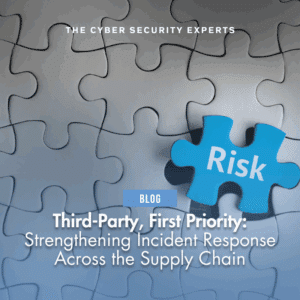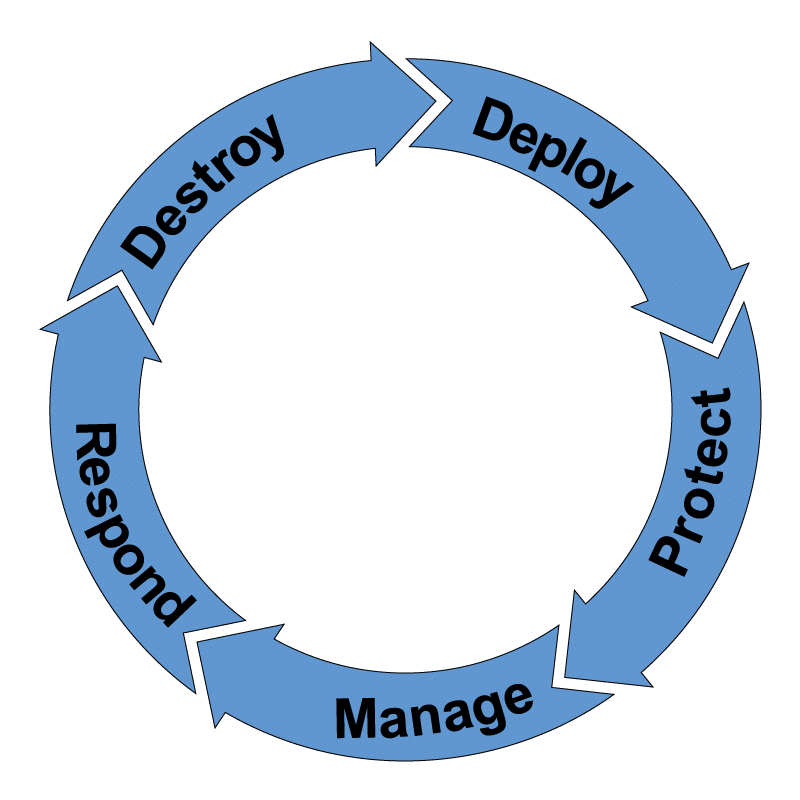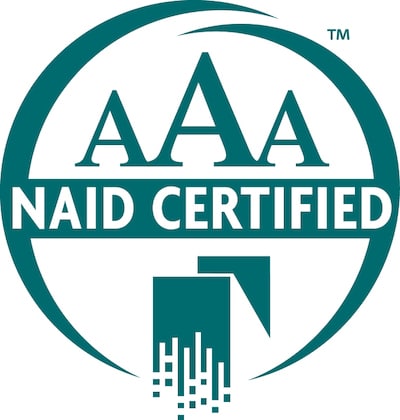Third-Party, First Priority: Strengthening Incident Response Across the Supply Chain
 When it comes to cybersecurity, your organization is only as strong as its weakest link. Increasingly, that weak point lies outside your perimeter. In today’s hyperconnected business environment, a breach in your supply chain is a breach in your business. It is no longer enough to secure your systems and hope your vendors are doing the same. Instead, organizations must take proactive steps to ensure that third-party incident response is part of their security DNA.
When it comes to cybersecurity, your organization is only as strong as its weakest link. Increasingly, that weak point lies outside your perimeter. In today’s hyperconnected business environment, a breach in your supply chain is a breach in your business. It is no longer enough to secure your systems and hope your vendors are doing the same. Instead, organizations must take proactive steps to ensure that third-party incident response is part of their security DNA.
The most advanced security program in the world can be undermined in seconds by a single supplier that lacks the maturity, transparency, or readiness to respond to a cyber event. This isn’t a theoretical risk. From managed service providers to payroll platforms, attackers are increasingly targeting third-party vendors to gain access to sensitive ecosystems. That means every third-party incident is also a first-party problem.
This blog explores how organizations can strengthen their incident response strategy by accounting for third-party relationships. We’ll look at how to prepare effective response playbooks, coordinate shared communication protocols, meet breach notification requirements, and recover faster through strong ecosystem alignment. We’ll also show how tools like CSO360 and SCR360 can support these efforts with better visibility, governance, and accountability.
Rethinking the Definition of Incident Readiness
Traditionally, incident response planning has focused inward. Security leaders have spent years developing policies, plans, and playbooks to detect, contain, and recover from incidents within their own walls. But now, companies must expand that view. Incident readiness today includes partners, suppliers, managed service providers, and any organization that touches your network or data.
This expansion requires a shift in mindset. A good starting point is to categorize third-party vendors based on risk. Who has access to your data? Who manages critical infrastructure or applications? Who supports daily operations in a way that could expose your business to external threats?
Once these tiers are defined, your incident response strategy should match the level of risk. For high-risk vendors, that means more rigorous scrutiny and deeper collaboration. It also means confirming that their incident response capabilities are aligned with yours.
Questions to ask include:
- Do our critical vendors have formal incident response plans?
- Are they willing to share those plans or align them with our own?
- How will they notify us in the event of a breach?
- What is their expected response time?
- Who is the designated point of contact during a security event?
These are not just checkboxes. They are essential building blocks of an effective, cross-organizational response strategy.
Creating Shared Response Playbooks and Communication Protocols
Every minute counts when an incident impacts your business and a third party. Misalignment or confusion in the early moments of a breach can lead to delays, errors, or regulatory missteps. That is why shared playbooks and communication protocols are critical.
Developing these playbooks requires collaboration between your internal security team and key third-party partners. The goal is to identify how each side will contribute during an incident and how they will communicate. Ideally, this is not a one-time document but an ongoing process that is tested and refined through joint tabletop exercises.
Your shared playbook should address several key areas:
- Event detection and reporting: How and when will the third party notify your team of a breach?
- Escalation paths: Who needs to be involved on both sides, and in what order?
- Containment and mitigation: What actions can the vendor take on your behalf, and where do you need to intervene?
- Public relations and regulatory disclosure: How will messaging be coordinated, especially when public announcements or breach notifications are required?
A coordinated approach prevents the chaos that often arises when two companies attempt to manage an unfolding crisis independently. It also builds trust between partners and ensures that everyone has a role in protecting shared assets.
Breach Notification Requirements and Legal Considerations
Breach notification is a complex and rapidly evolving area of cybersecurity law. The legal and compliance implications become even more challenging when third parties are involved.
Organizations must first determine whether a third-party breach triggers their notification obligations. This can depend on factors such as the type of data compromised, the contractual agreements, and the jurisdictions involved. Many companies assume the vendor will handle notification, but this is a dangerous assumption. Your customers, regulators, and legal teams may expect or require you to act swiftly.
This is where pre-planned breach reporting procedures are essential. Contracts with vendors should specify timelines for notification, define liability in the event of a breach, and establish expectations for cooperation. More importantly, your internal teams must be trained to respond quickly, even when the root cause lies outside your systems.
Having an incident response partner like Reclamere can streamline this process. Our teams help clients review vendor agreements, align breach reporting requirements, and prepare communication templates that reduce stress in a high-pressure moment.
Recovery and Resilience Across the Ecosystem
The end goal of every incident response effort is recovery. But recovery in a third-party scenario doesn’t just mean restoring your operations. It also means understanding the scope of the third-party impact and ensuring your business can return to full function, even when a key partner is still in crisis mode.
Proactive planning pays dividends here. Businesses that have continuity plans for vendor disruptions, clear escalation paths, and cross-organizational recovery strategies can rebound faster and, more importantly, retain customer confidence.
In addition, regular third-party risk assessments can uncover hidden interdependencies. For example, a single compromise could have a cascading effect if multiple vendors rely on the same cloud provider or software platform. Identifying these dependencies in advance helps companies avoid surprises during recovery and may even influence procurement strategies.
Leveraging CSO360 and SCR360 to Strengthen Incident Coordination
Reclamere clients use services like CSO360 and SCR360 to close the visibility gap between internal operations and third-party environments. These platforms support integrated risk management, real-time communication, and cross-party coordination before, during, and after a breach.
CSO360 provides executive-level insights into the security posture of your vendor ecosystem. It helps security leaders quickly identify which third parties pose the most significant risk, their response capabilities, and where additional oversight may be needed.
SCR360, on the other hand, focuses on secure collaboration and response. During an incident, it facilitates structured communication between organizations, tracks key response metrics, and ensures team alignment. It also stores and manages shared playbooks, policy documents, and breach notification templates.
Together, these tools offer a framework for turning third-party uncertainty into proactive readiness. They allow organizations to respond not just as a company, but as a coordinated ecosystem.
Making Incident Response a Shared Responsibility
In the modern threat landscape, no company is an island. Every organization relies on others, and those interdependencies create new risks that cannot be ignored. Strengthening incident response across the supply chain is not just a compliance task. It is a strategic priority that reflects how business operates today.
Leaders who prioritize third-party security are better prepared to defend their organization, protect their reputation, and build resilient relationships. The time to prepare is before the breach, not during it.
Now is the moment to review your vendor risk profiles, revisit your incident response playbooks, and open the lines of communication with your partners. Your business and your entire ecosystem depend on it.
Want to strengthen your vendor response strategy before the next breach?
Download our “Do’s & Don’ts of Third-Party Risk Management” checklist – a practical guide for identifying weak links, establishing effective communication, and aligning your response playbooks across the supply chain. Whether building from scratch or refining your current program, this checklist delivers real-world insights that drive resilience.








